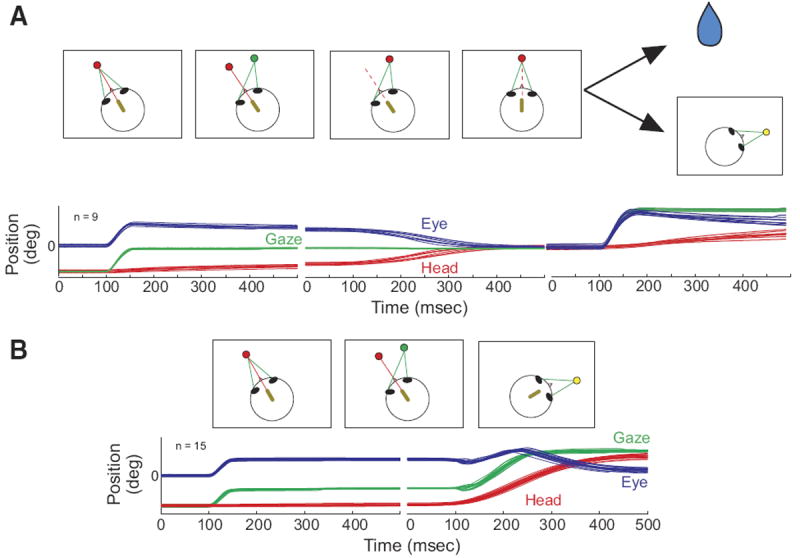FIG. 1.

Schematic representation of the “head-only” and “head-only-gaze” tasks (A) and the gaze task (B). In A, the arrows depict 2 different possibilities, a reward (depicted by the drop of water) or the appearance of a yellow target at a new location, resulting in the “head only” and “head-only-gaze” tasks, respectively. A miniature laser (yellow oval), mounted on the head, produces a red spot on a light-emitting diode (LED) board. Green lines indicate the animal’s line of sight (gaze). The dashed red line indicates that the laser may be either on or off at this stage of the task. Below the schematic representations of the tasks, eye (blue), head (red), and gaze (green) position traces are shown as a function of time. In each trace, 100 ms are shown before the onset of the movement.
